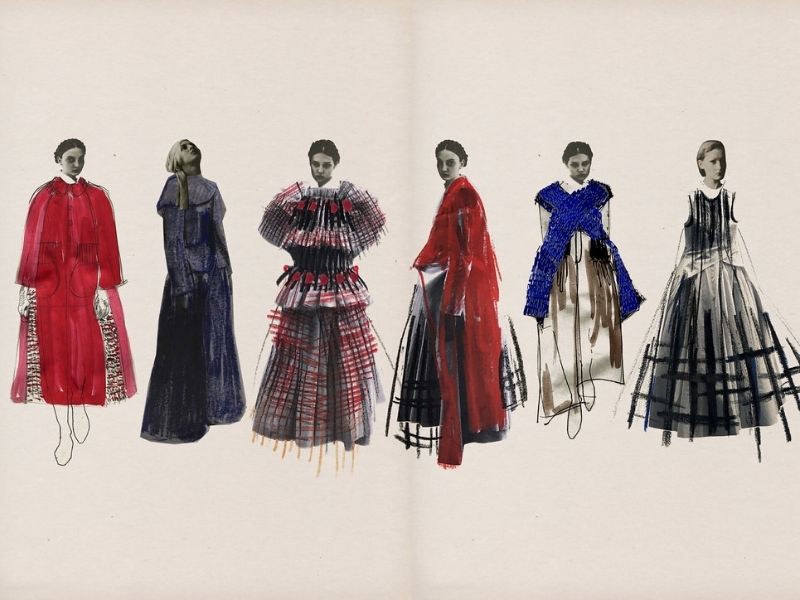Fashion Design: Growing allure of the fashion business
A large number of young people across the country are taking to fashion design as a serious big bucks career option

An important growth area in the new post-liberalisation Indian economy is the haute couture or fashion industry. Though the great majority of aficionados throng fashion shows to size up the models rather than the clothes they parade, a growing number of young people are taking to fashion design as a serious and big bucks career option. Inspired by the national and even international success of Indian couturiers such as Rohit Bal, Suneet Varma, Tarun Tahiliani, and Ritu Beri among others, fashion designers and fashion institutes are springing up all over the country.
Adding to the allure of this nascent business as a career option is that in 1998 top notch fashion designers teamed up to establish the Fashion Design Council of India (FDCI). This apex body promotes fashion as an organised business. The FDCIs showcase event is the annual Lakme India Fashion Week which provides an opportunity for fashion designers to display their creations draped over the top fashion models in the country before thousands of serious clients including national and international suppliers and buyers.
For individuals with artistic and creative flair and the ability to express themselves through the graphic arts, this is a good career option. A fashion designer needs visual imagination and an ability to combine colours, fabrics, and styles in innovative ways.
The minimum academic qualification required by most polytechnics and institutes of fashion design is Plus Two or equivalent. Admission is generally on the basis of a written test in which applicants flair for design, sketching, and sense of proportion is assessed. In some polytechnics offering diplomas in marketing or garment merchandising, numerical ability and analytical skills are also assessed.
FASHION TECHNOLOGY INSTITUTES. Most aspiring fashion designers in India set their sights on the Central government-run National Institute of Fashion Technology (NIFT) in New Delhi which has branches in Kolkata, Mumbai, Gandhinagar, Chennai, Hyderabad, and Bangalore. NIFT offers a full-time three-year graduate programme in fashion and accessory design. Those with at least a 50 percent average in their Plus Two or equivalent are eligible to apply. Selection is based on a written test followed by group discussion/situation tests and personal interview. Generally, the written test is held in all NIFT branches in February (announced in October/November in all national dailies), followed by interviews. Written test results are announced in May and study term begins in July every year.
NIFT also offers two-year postgraduate courses in advanced fashion design, knitwear design and technology, garment-manufacturing technology, apparel marketing and merchandise management, and fashion communication. Short-term courses are also offered.
The other Mecca of aspiring fashion designers is the National Institute of Design, Ahmedabad, which offers a four-year graduate programme in design with specialisation in textile design, among other courses. Applicants with a minimum Plus Two qualification below 25 years of age are eligible to write an admission test held in Ahmedabad, Bangalore, Kolkata, Mumbai, Chennai, and New Delhi in January. Short-listed candidates are called for a one-day workshop and interview in Ahmedabad in April/May.
Some of the other high quality professional programmes offered in the area of fashion design include the 30-month diploma course of the Premila Vithaldas Polytechnic (SNDT University), Mumbai; Sophia Baba Polytechnic, Mumbai; JD Institute of Fashion Technology, Bangalore and Mumbai; Mangalore Institute of Fashion Technology, Mangalore; International Institute of Fashion Technology and International Polytechnic for Women, New Delhi; Pearl Academy of Fashion, Delhi and Bangalore Institute of Fashion Technology.
Fashion design professionals are increasingly being hired by fashion houses, although some tend to work either on their own, in garment export companies, in the film industry, in theatre, or as fashion journalists. A newly-qualified fashion graduate can expect to earn between Rs.5,000–20,000 depending on the institution she has graduated from, the employer company, and her portfolio.
Namrata G is one of Bangalores well-established fashion designers who launched her Namratag label in 1994. A business management graduate of Pune’s Symbiosis Institute, she describes herself as a fashion designer by choice. The main attraction of this profession is the opportunities and rewards it offers for creativity and imagination,” says Namrata who won the Kingfisher Fashion Award in 2000.
For budding fashion designers Namrata has some useful advice. This is a creative field, with technical aspects added on. You have to be prepared to manage people involved in stitching, embroidering, and various forms of embellishment. That is not an easy task. All of the above is important if you wish to launch your own collection. But you can also work as a merchandiser or designer with a big garment house or exporter. However, the final word in the fashion business is hard work,” she advises.
















Add comment